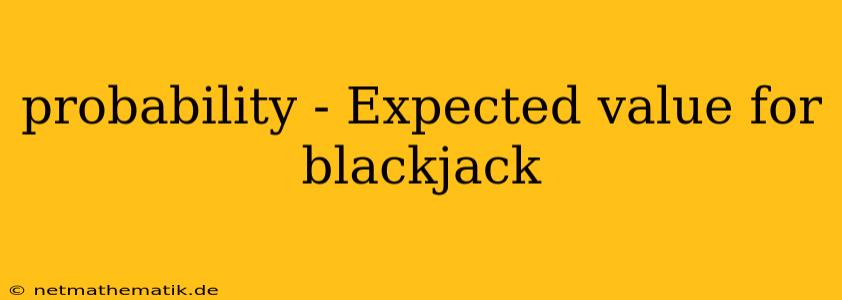Blackjack, a beloved casino game known for its strategic play and potential for big wins, relies heavily on understanding probability and expected value. While luck certainly plays a role, a keen grasp of these concepts can significantly improve your chances of walking away a winner. This article delves into the world of probability and expected value in blackjack, equipping you with the knowledge to make informed decisions at the table.
Understanding Probability in Blackjack
Probability is the cornerstone of any successful blackjack strategy. It governs the likelihood of various outcomes, enabling players to make calculated decisions that maximize their chances of winning.
Card Counting: A Probabilistic Advantage
Card counting, a widely discussed technique, is a prime example of probability in action. By keeping track of the cards dealt, players can deduce the probability of certain cards appearing next. For instance, if the deck is rich in high cards (10, J, Q, K, A), the player knows they have a better chance of getting a blackjack or drawing a card that improves their hand.
Basic Strategy: A Foundation of Probability
Basic strategy, the foundation of any sound blackjack approach, is built on probability calculations. It outlines the optimal move for every possible hand and dealer's upcard, based on the statistical likelihood of winning with each action (hit, stand, double down, split).
Side Bets: Assessing Probabilities
Blackjack offers various side bets, such as "insurance" and "perfect pairs." Understanding the probability of these bets is crucial to making informed decisions. For example, "insurance" offers a payout if the dealer has a blackjack. However, the probability of this happening is relatively low, making it a risky bet in most cases.
Expected Value: The Key to Making Informed Decisions
Expected value (EV) is a crucial concept in blackjack, helping players determine the long-term profitability of their decisions. EV represents the average outcome of a bet over a large number of trials. It is calculated by multiplying the potential payoff of each outcome by its probability and then summing the results.
Positive Expected Value: The Goal
A positive expected value indicates that a bet is favorable in the long run. In blackjack, achieving a positive EV requires utilizing optimal strategies and identifying situations where the odds are in your favor.
Negative Expected Value: The Risk
A negative expected value signifies that a bet is unfavorable and will likely result in losses over time. This applies to many side bets in blackjack, as the house edge makes them less profitable for players.
Expected Value in Decision Making
Understanding expected value helps players choose actions that maximize their potential winnings. For example, doubling down on a 10 or 11 against a dealer's 6 or lower has a positive EV, making it a favorable move.
Conclusion
Probability and expected value are fundamental concepts in blackjack, guiding players towards informed decisions and maximizing their chances of success. By understanding these concepts, players can make calculated bets, employ optimal strategies, and improve their overall gameplay.
Remember, while luck plays a role in blackjack, a solid grasp of probability and expected value empowers you to play smarter and potentially turn the odds in your favor. With each card dealt, the game becomes a thrilling battle of probability, where informed decisions can lead to exciting wins.
